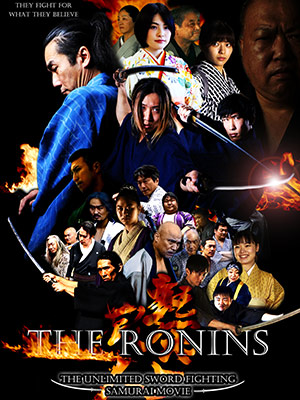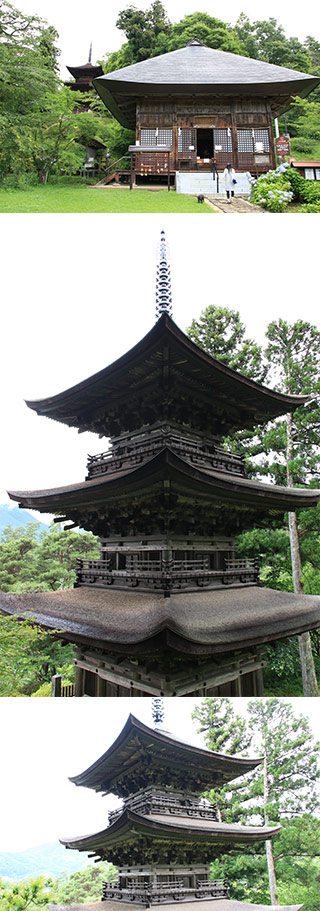National Treasure Daih-ji Temple, Three Storied Pagoda (Looking Back Pagoda)
Height: 18.56m
This pagoda was built by Tennoji carpenter Shio, a certain person and other seven Kobansho in 1,333. We can notice that the first floor is especially large when we look at the pagoda very carefully. This is the biggest feature of the pagoda and it has changeful and calm form. Against the second floor, the third floor built in the most regular construction called Santesaki, only Shojyu was built in a little process called Nitesaki, so the plane is larger at this rate. This technical skill has only used this rate. This technical skill was only used through this pagoda except for Kofuku-ji temple Three Storied Pagoda in Nara and is very curious.
This pagoda was built in the transition period from Kamakura era to Nanboku-cho era, and during its period they usually attach decorative sculpture to every place of buildings, but any decorative details were not used through this pagoda except simple Kaerumata set at the middle of Shojyu. But the technical skill of this pagoda is just regular and moreover, we can't find any local collapse of architecture. So we can observe this pagoda was built by central artificers.
Zushi and Shumidan, Important Cultural Assets
Zushi is set up in Kannon-do and it installs the principal statue. Eleven face kannon. This was constructed in the period from the end of Kamakura era to Nanboku-cho era. Wholly warped eaves spring up strongly and Tumegumi at the reverses of eaves have feature and the door is Zenshu style Zushi of San Karado. And carved wooden shachi clinged to the both ends of the ridge of the roof are very curious and is the oldest in Japan. Shumidan laying Zushi was the work in the same era and has carved design of lotus at the Juka of Koran. For example, the style of Kakuhazama transmits the form of Kamakura era.
Wooden Eleven Faces Kannon Ritsu-zo, Important Cultural Assets
The statue is 171cm high and is the principal statue of Kannon-do. It was carved in one wood of Katura and stand on the pedestal inscribed lotus petals on the stump. The face is like an egg in shape, and the cheek is full and the statue is old fashioned, elegant, filled with Quantity feeling and it is the oldest Buddhist statue in this part of the country.
Wooden Fuken Bosatsu Ritu-zo, Important Cultural Assets
This is Wakizamura Hotoke of the principal statue, eleven faces kannon and they said it was built in the same era of the principal statue. The statue is 107cm, high and it was carved in one wood of Katura. And the way of carving, the state of flesh, Emon, etc. are quite alike eleven faces kannon.






